Unlock tight shoulders with these easy exercises using tennis balls to release tension and increase mobility.
Shoulder tightness and pain can happen for a variety of reasons, from hunching over a computer all day to chronic stress. This tension in your shoulders can build up over time and start to affect other parts of your body like your neck, spine, and hips.
The shoulder – glenohumeral – joint is very complex. (1) It is one of the most mobile joints in our body, leaving it very susceptible to tightness, pain, and injury. The rotator cuff muscles – also known as the SITS muscles – surround the shoulder joint and consist of the Supraspinatus, the Infraspinatus, the Teres Minor, and the Subscapularis. These four little muscles work to keep the humerus secure in the shallow shoulder joint while moving through a very large range of motion. The lack of ligament support, along with repetitive motions, makes this joint prone to injury.
Suffering from a sore neck, back and shoulders? Get our mobility guide to ease pain and soreness.
Get The FREE Mobility Guide To Fix Your Pain Today!
Muscles that are attached to the shoulder joint can also cause issues by way of tightness and referred trigger point pain. (2) These muscles include: the deltoids, pecs, lats, trapezius, neck, and biceps. Trigger points in these muscles and the SITS muscles, whether latent or referred, cause tightness in the shoulder and can hinder the range of motion of these four muscles.
Luckily, there are simple exercises you can do to release tightness in your shoulders quickly and easily!
Deltoids
On top of the SITS muscles is the deltoid muscle, which forms the rounded contour of the shoulder. (3) This muscles consists of three parts – the anterior, lateral, and posterior – and helps to internally rotate the humerus and abduct the arms along the frontal plane of the body.
Deltoid-Side
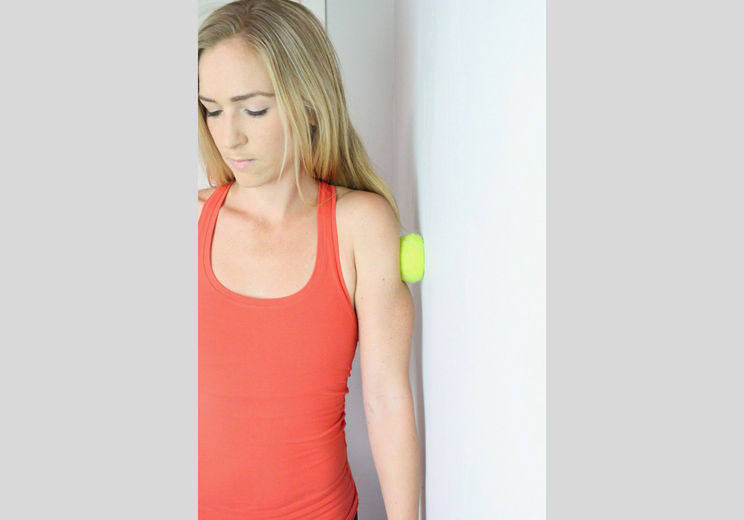
- Stand next to a wall so that one side of your body is facing it.
- Place your tennis ball between the side of your deltoid and the wall.
- Lean into the ball and make small circular motions until you find a trigger point. Hold for 20 seconds or until you feel a release, then switch sides.
Deltoid-Back
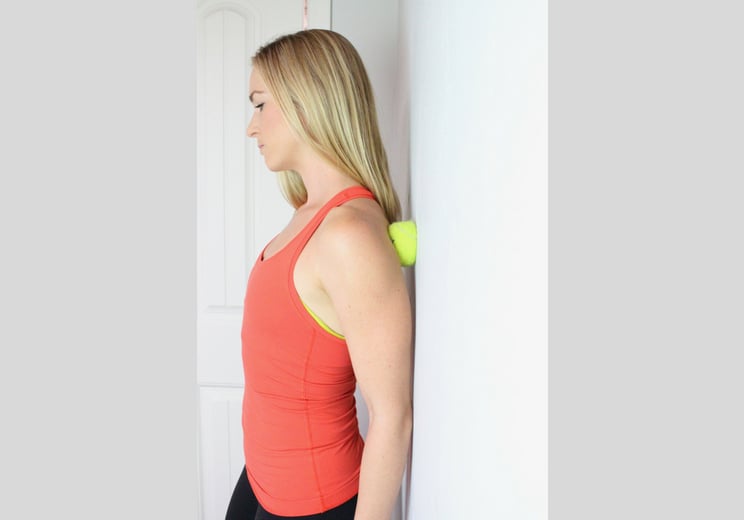
- Stand with your back to a wall.
- Place the tennis ball between the back of your shoulder and the wall.
- Lean into the ball and take small circular motions until you find a trigger point. Hold for 20 seconds or until you feel a release, then switch sides.
Subscapularis
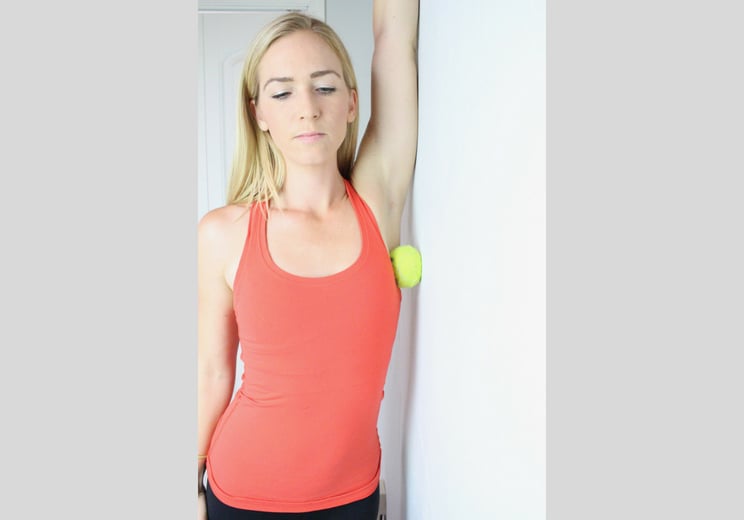
This rotator cuff muscle attaches to the inside of the shoulder blade, deep within the armpit region. This muscle contracts to rotate the arm and stabilize the shoulder joint during movement. Trigger points here will refer pain to the back of the shoulder and around the wrist.
- Stand next to a wall so that one shoulder is facing it.
- Lift your arm up, placing your palm on the wall overhead. Place a ball between your body and the wall.
- Lean against the ball so that it is resting underneath your armpit. Make small side-to-side movements until you find a trigger point. Hold the trigger point for 20 seconds or until you feel a release. Look for more trigger points on this side and when you are done, switch sides.
Tip: You can also work the tennis ball further down the side of your body and get into the side of the lats.
Infraspinatus
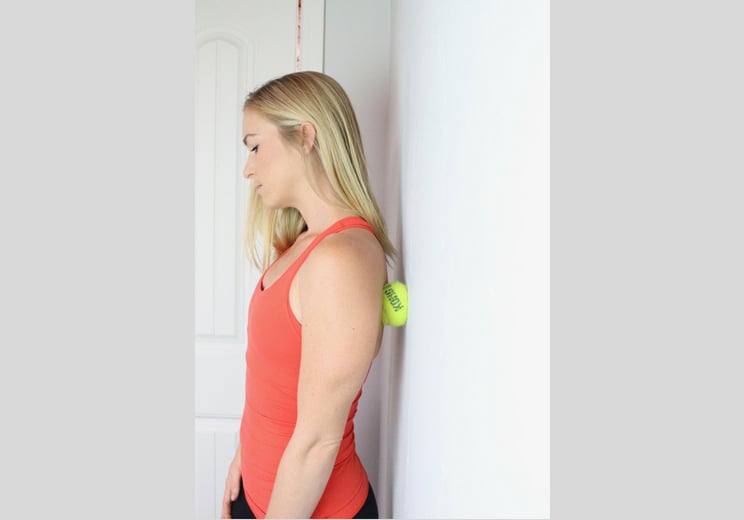
This rotator cuff muscle is found on the back of the shoulder blade, above the Subscapularis. It attaches to the lower part of the shoulder blade. This muscle rotates the arm in the shoulder joint during contraction and stabilizes the shoulder joint during movement. Trigger points in this muscle prevent you from reaching behind your back and above your head.
- Stand with your back to a wall.
- Place the tennis ball so that it rests on top of your shoulder blade inside of the shoulder.
- Make small circular movements around the area, stopping when you find a trigger point. Hold for 20 seconds or until you feel a release. Look for more trigger points on this side and when you are done, switch sides.
Pectoralis Major
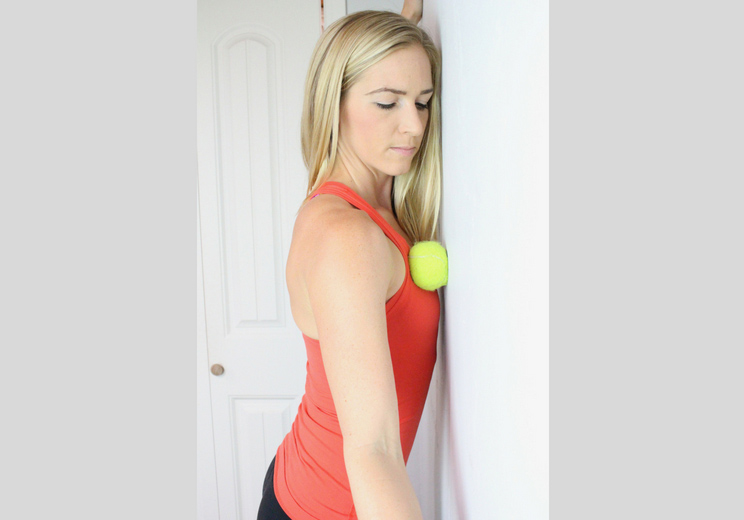
This large chest muscle is responsible for the movement of the shoulder joint (4), flexing and adducting the humerus. Trigger points in this large muscle refer pain and tightness to the shoulder.
- Stand facing a wall.
- Place the tennis ball on the wall and lean into it so that the tennis ball rests on your chest muscle, inside of your shoulder.
- Make small circular movements around the whole chest muscle, stopping when you find a trigger point. Hold for 20 seconds or until you feel a release. Then continue looking for more trigger points. Switch sides.
Latissimus Dorsi
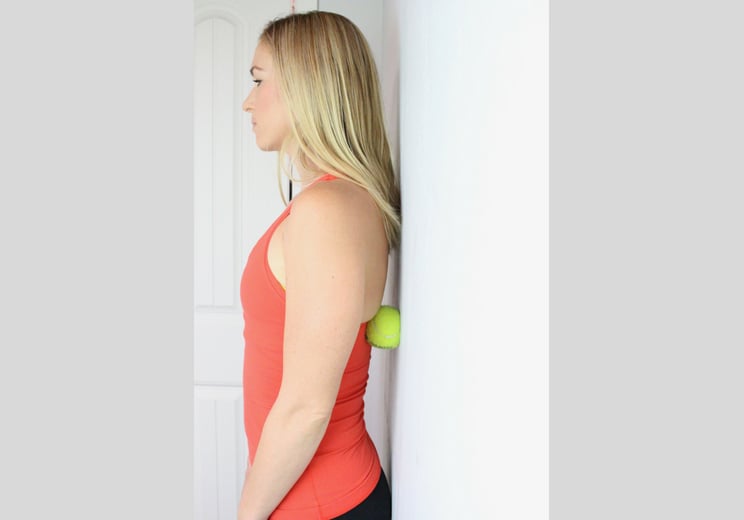
This huge muscle attaches to many areas of the body, including the shoulder. It extends and adducts the humerus, as well as internally rotating it. It also plays a large role in the movement and stability of the scapula, affecting function and stability in the shoulder joint. Trigger points in the lats cause stiffness and referral pain to the front of the shoulder.
- Stand with your back to a wall.
- Place the ball on the wall and lean into it so that the ball is pressing into your back, underneath your scapula.
- Take small movements back and forth, and up and down, until you find a trigger point. Once you find one, hold for 20 seconds or until you feel a release. Then continue looking for more trigger points. Switch sides.
Biceps Brachii
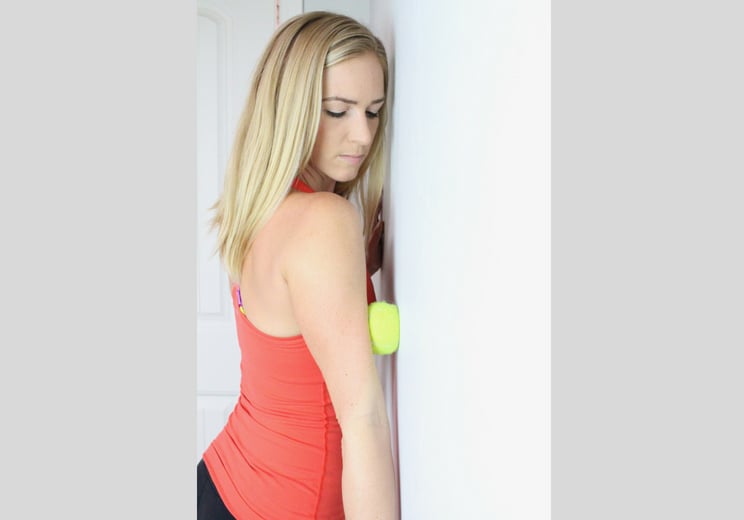
This muscle rests along the front of the upper arm and originates in the scapula and the shoulder joint, causing it to assist with many movements of the shoulder. (5) Trigger points in this muscle radiate pain to the front of the shoulder causing stiffness and difficulties with lifting the arm above shoulder level.
- Stand facing a wall.
- Place the ball against the wall and lean against it so that it rests on the front of your upper arm, right below the shoulder.
- Slowly roll the ball down towards the inside of your elbow, stopping for at least 20 seconds when you find a trigger point. Look for more trigger points on this side and when you are done, switch sides.
Neck – Scalene Muscles
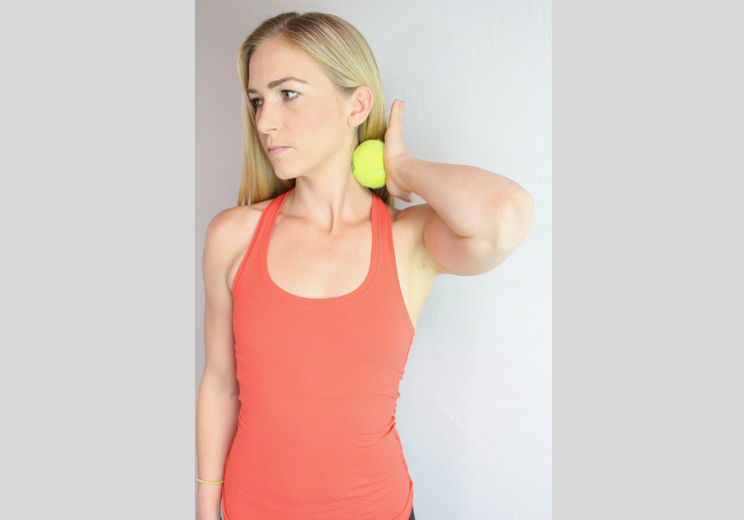
The scalene muscles are a group of three different muscles that rest on the outside of the neck. (6) Trigger points in these muscles can refer pain down to the inside of the shoulder blade and cause shoulder pain.
- Begin standing or seated.
- Take the ball in one hand and place the ball against the side of your neck.
- Use your hand to roll the ball slowly up and down the side of your neck, stopping when you find a trigger point and holding for 20 seconds. Continue with one side of the neck until you’ve hit all the trigger points, then switch sides.
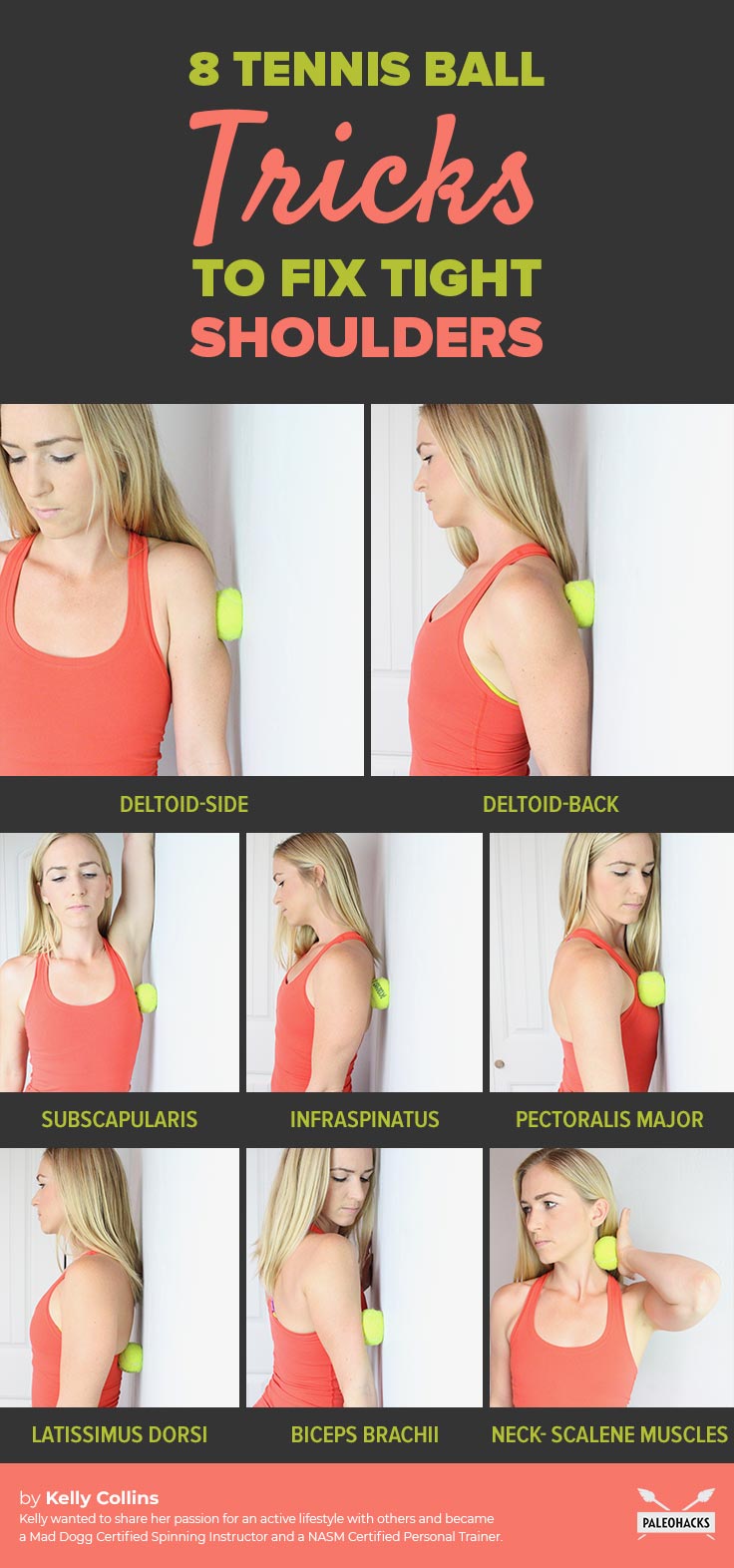
(Your Next Workout: 12 Ways To Use A Tennis Ball To Release Tight Hips


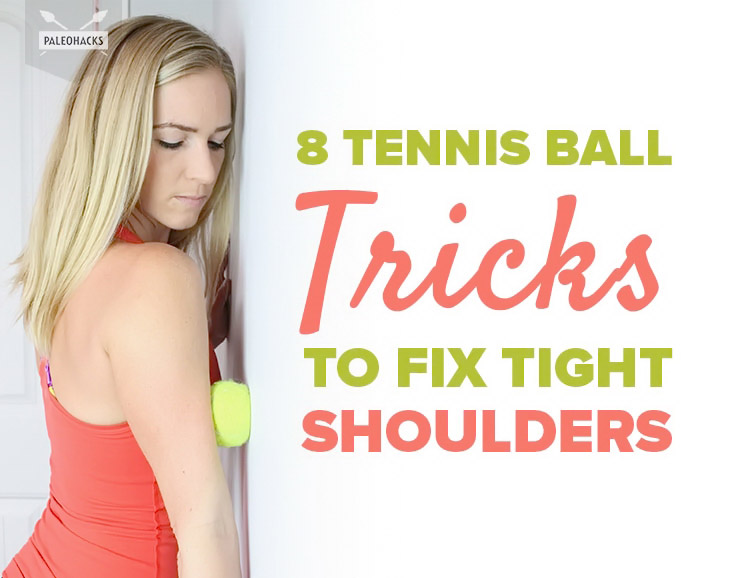
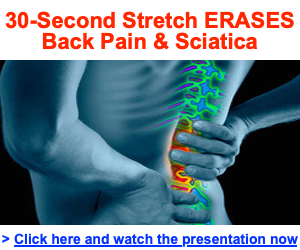
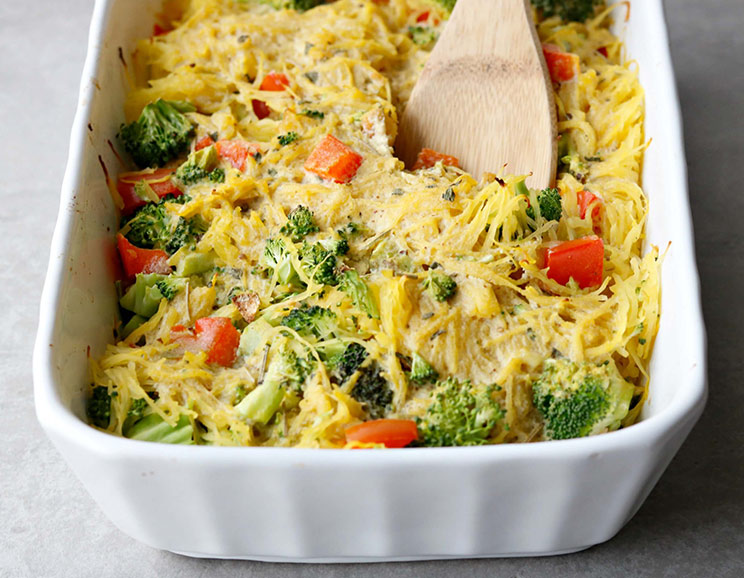 21 Vegetarian Casseroles That Are Pure Comfort
21 Vegetarian Casseroles That Are Pure Comfort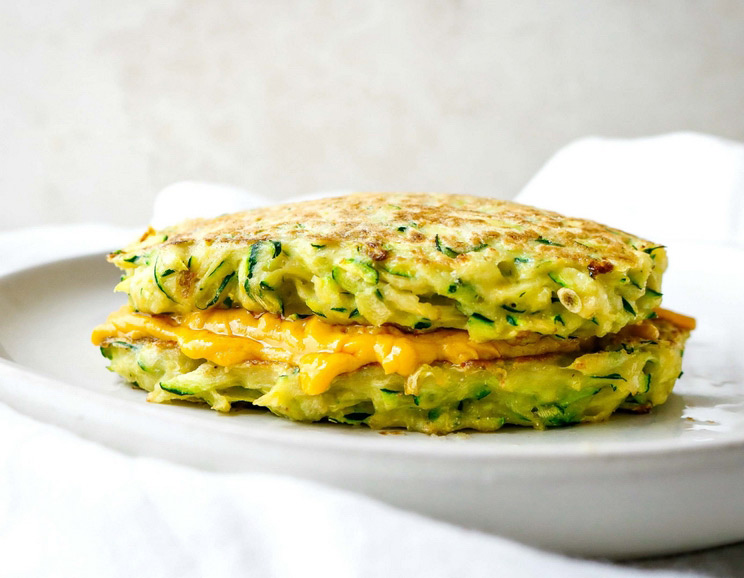

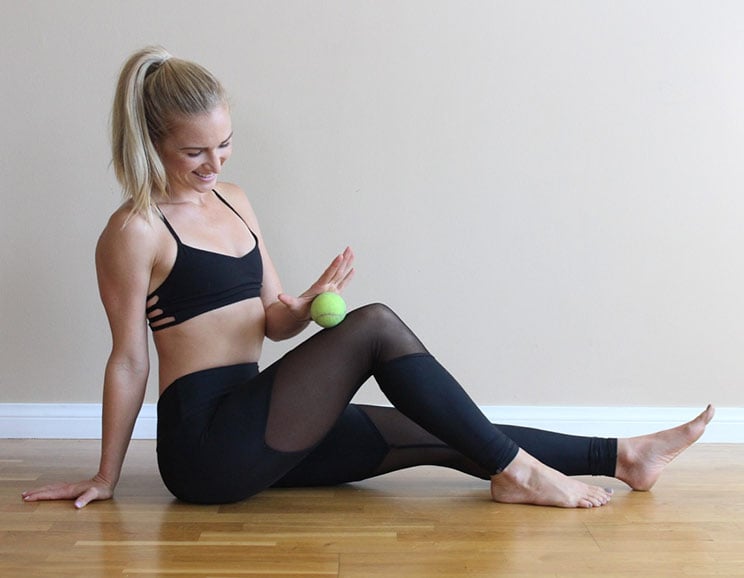
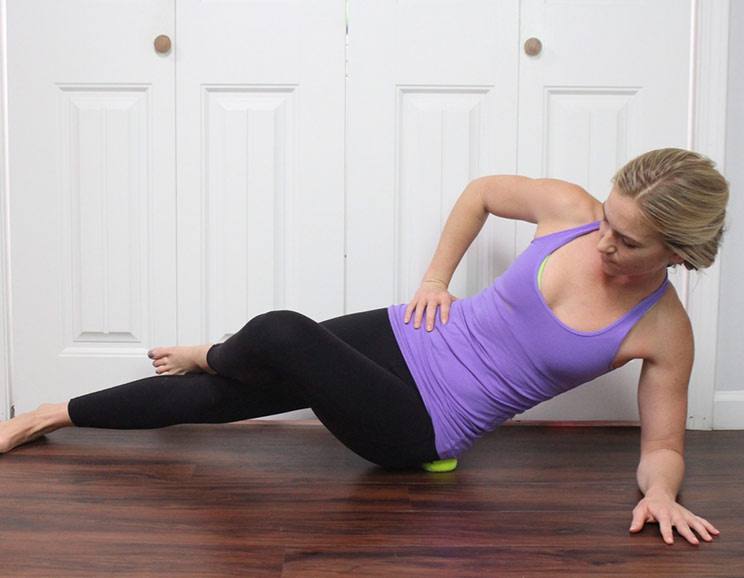
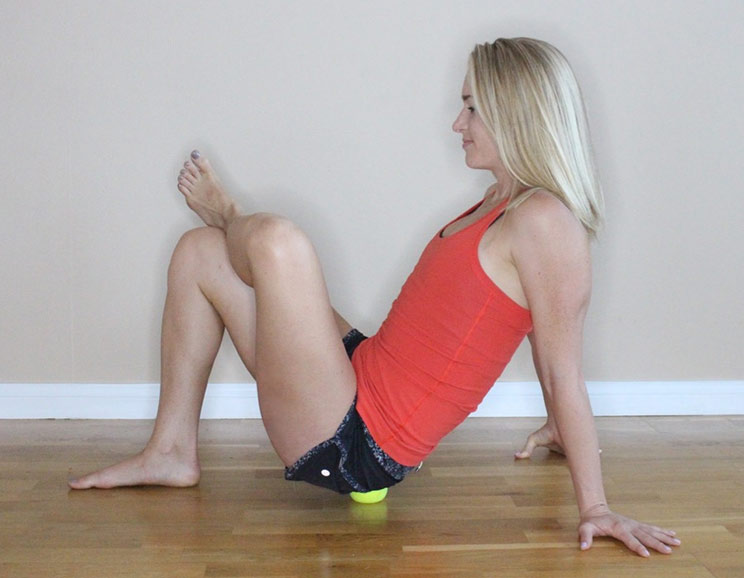

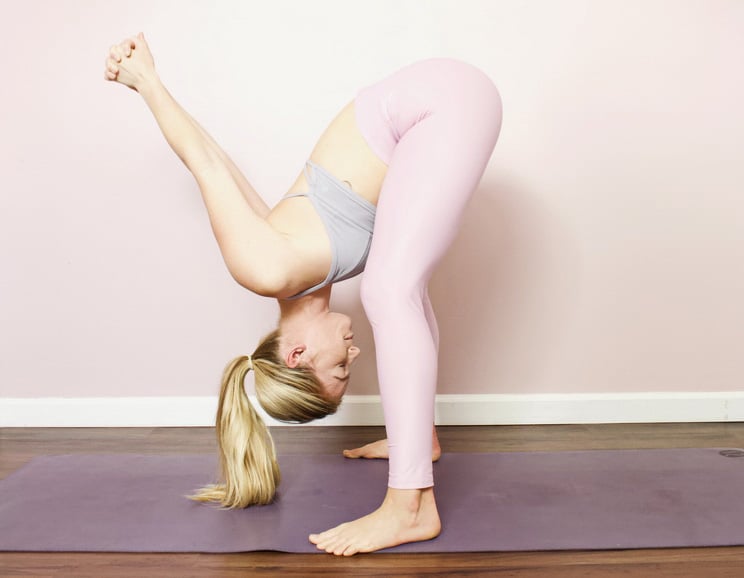
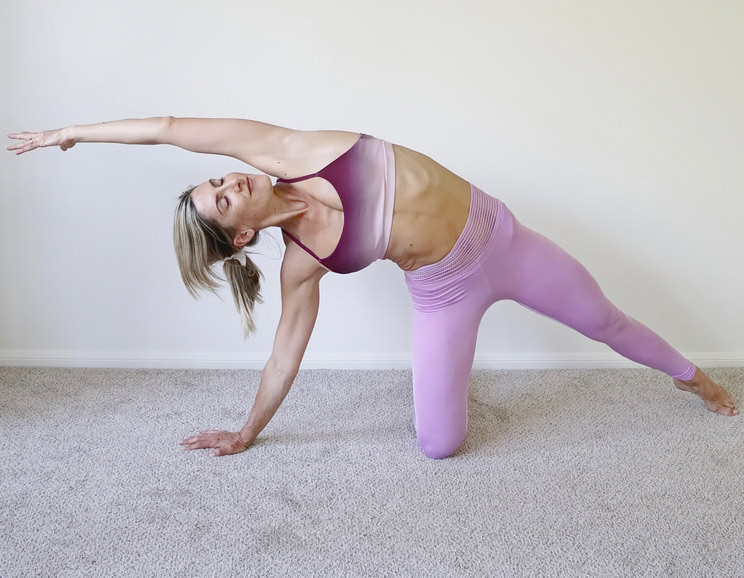
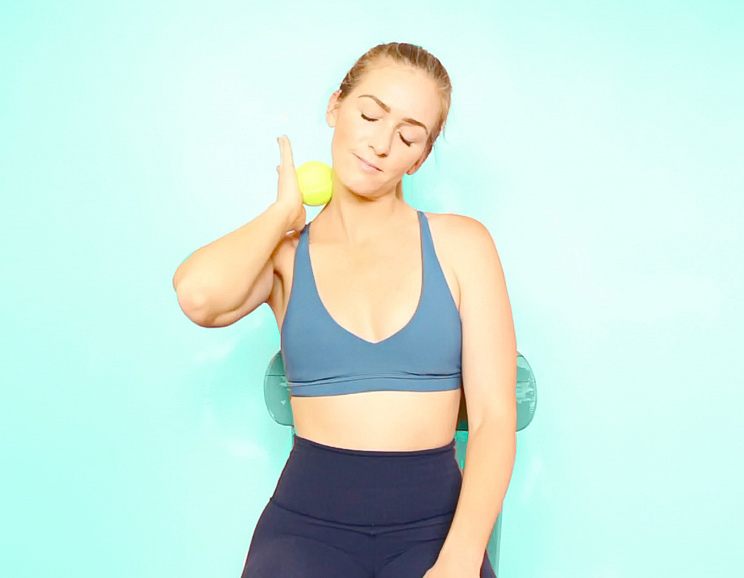
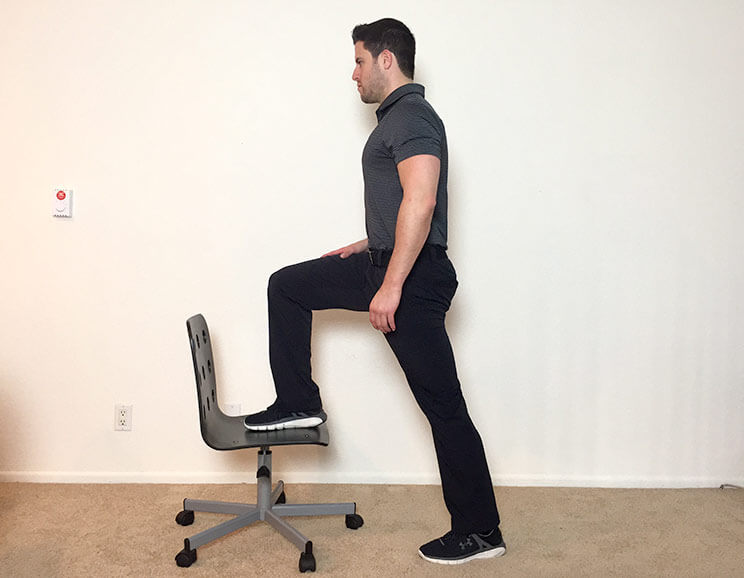
Show Comments